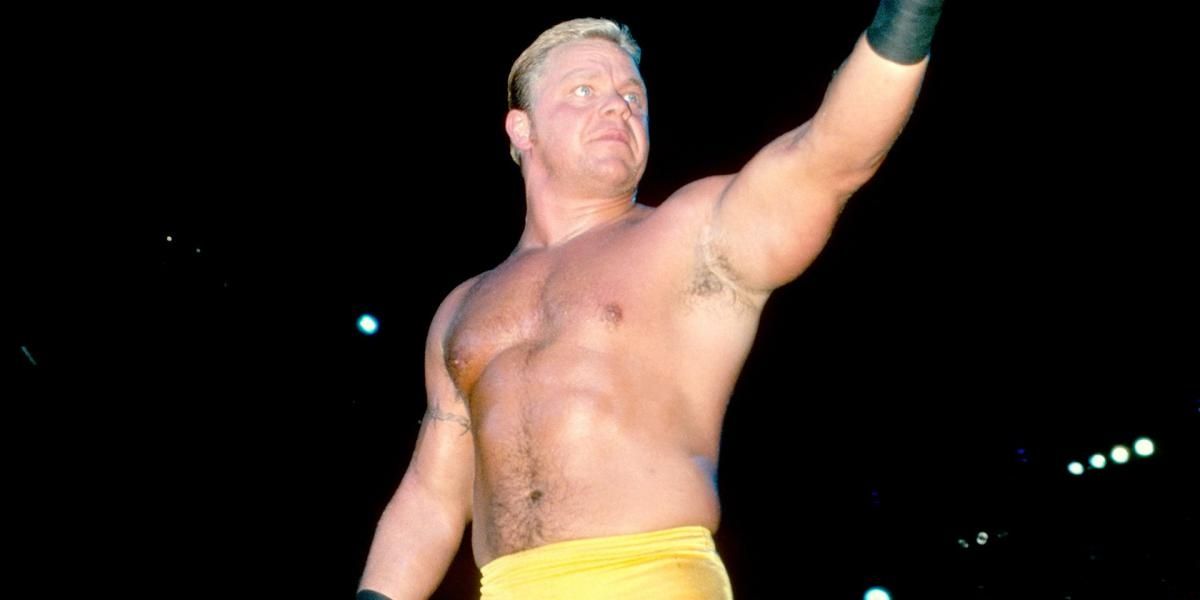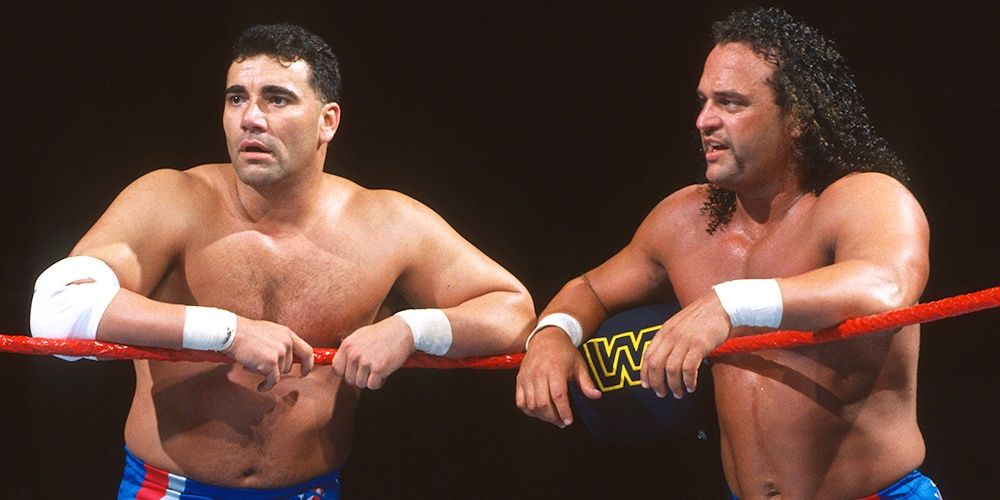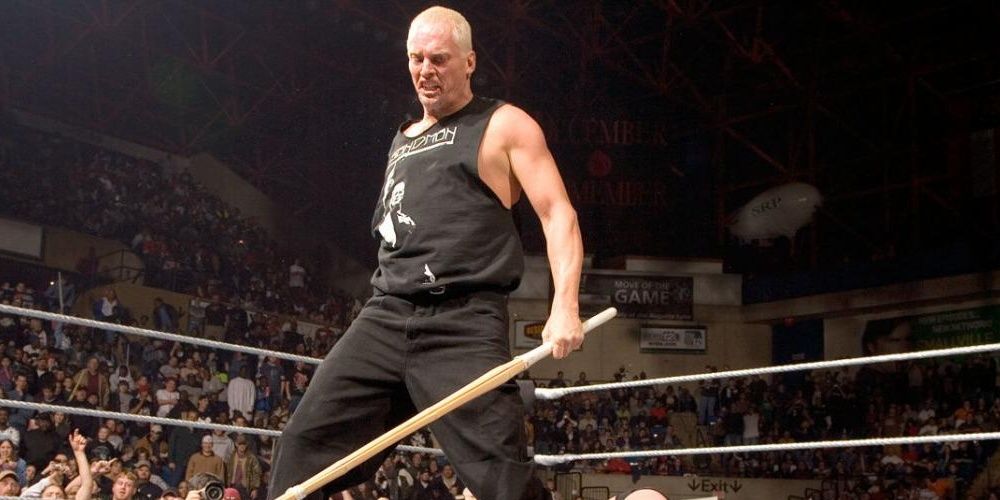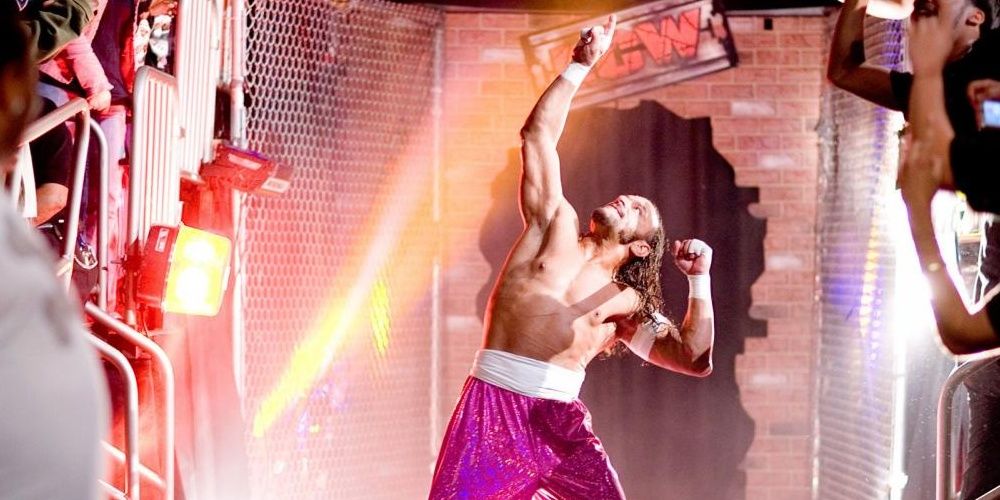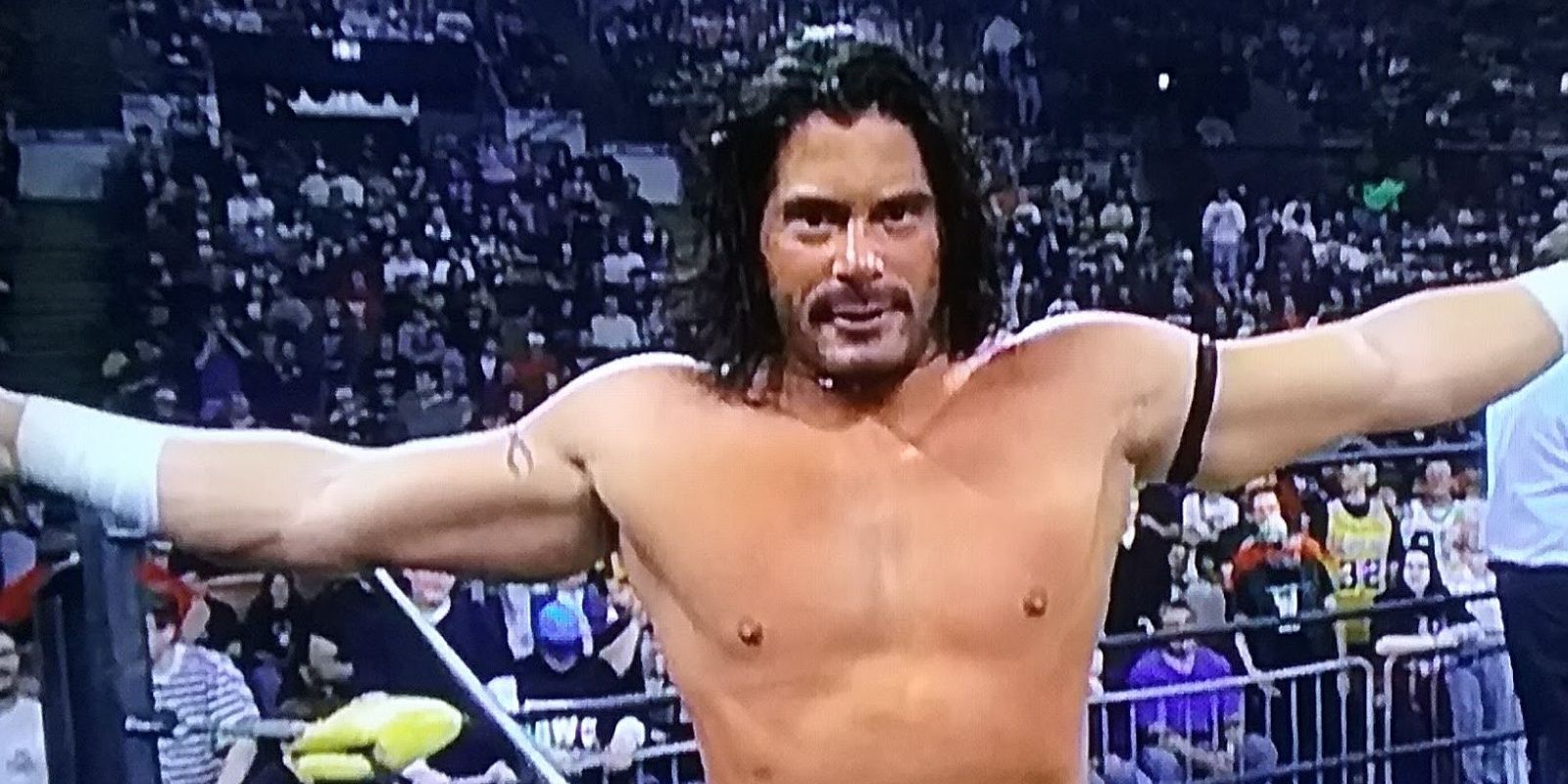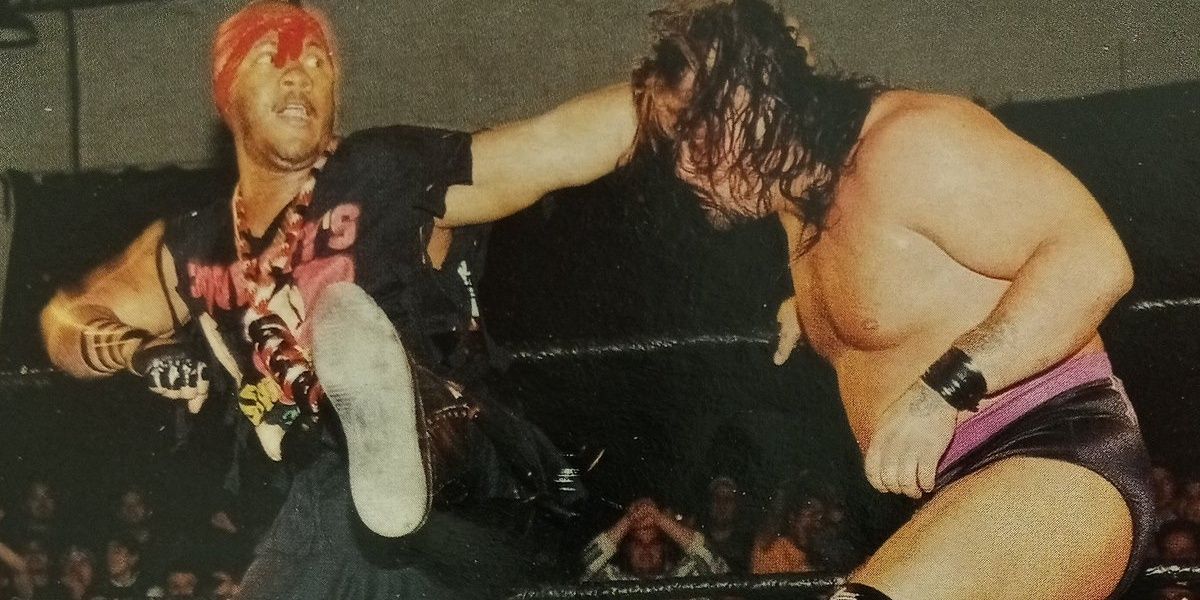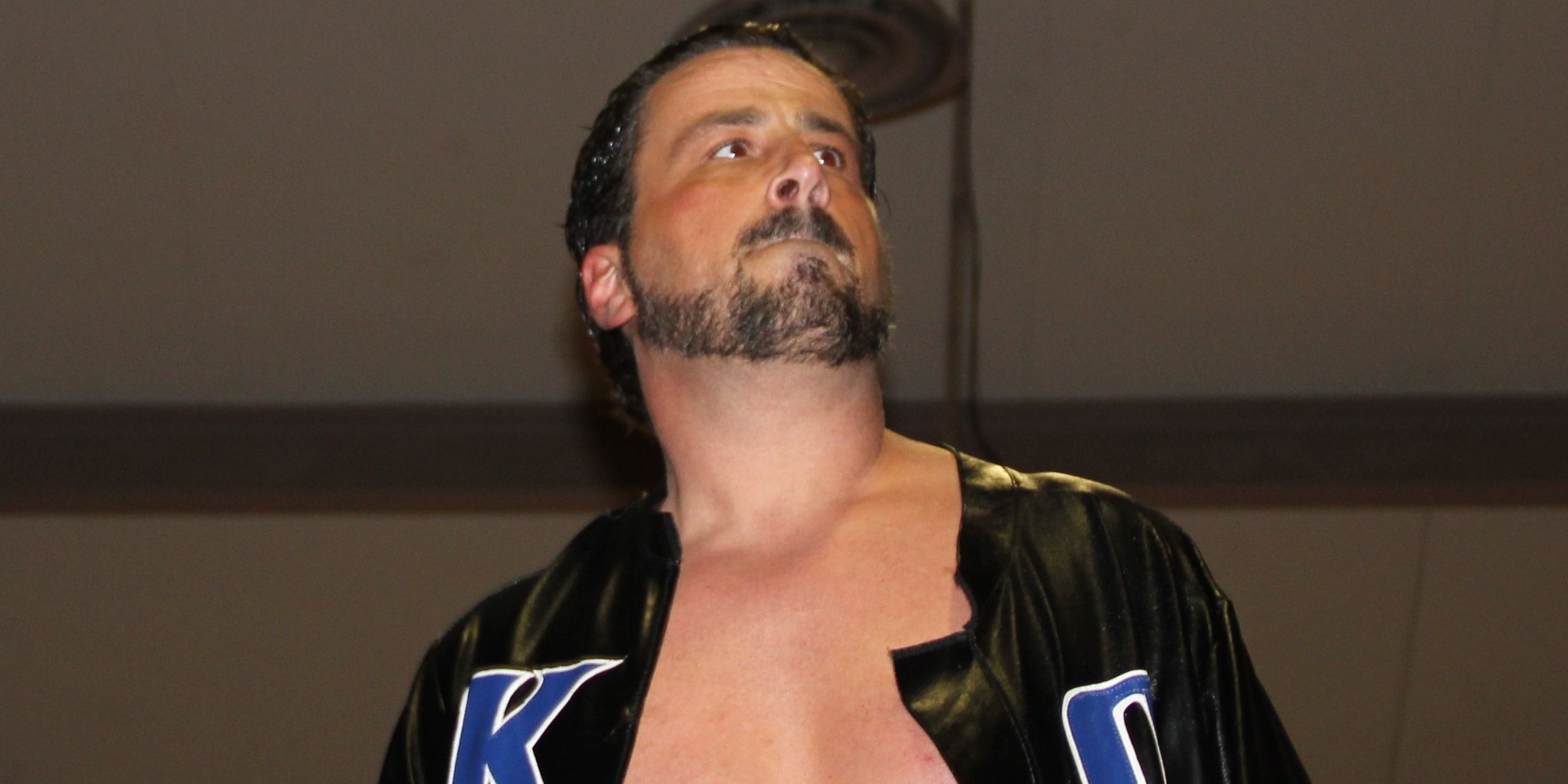ECW was an explosive brand that very quickly grew from a regional independent promotion to a nationally recognized wrestling company. The company’s hardcore violence and invocation of foul language and storylines driven by realism were influential in shaping the larger trajectory of the pro wrestling business at the time.
Certain stars and their signature moves long outlasted Paul Heyman's original ECW, whether it’s Rob Van Dam’s creative signature chair-assisted spots like the Van Daminator or Van Terminator or Raven’s crisp Evenflow DDT. However, there are other big maneuvers and holds that don’t hold up as well looking back at them.
10 Rob Van Dam’s Split Legged Moonsault
Rob Van Dam’s athleticism, martial arts skill, and creativity, blended with a sense of violence made him a stand out star for ECW. His innovations and talent facilitated a career that has continued two decades after the Land of Extreme closed its doors.
While today’s fans most readily associate RVD with his Five Star Frog Splash, the Split Legged Moonsault was a primary finisher for him in the original ECW. While the move was fresh for its time and is objectively physically impressive, it hardly looks like a killer by today’s standards. The relatively low arc of the moonsault suggests lower impact. Rather than a finishing maneuver for a top star, it feels a lot more like a set up move to lead to bigger things.
9 Shane Douglas’s Belly-To-Belly Suplex
There’s something to be said for traditionalism and making use of holds and throws that have been around forever. However, for as important of a star as Shane Douglas was to ECW history, it’s a bit strange to look back on his signature finisher being a belly-to-belly suplex.
Douglas delivered the move well and got it over in its context. Nonetheless, in a company known for over-the-top violence, his finisher feels pretty underwhelming.
8 Phil LaFon’s Belly-To-Back Suplex
Watching wrestling in the last five years, it has become entirely ordinary to watch Brock Lesnar take opponents to Suplex City by nailing repeated release German suplexes. This dominating offense can look brutal and believable. Nonetheless, the idea of Lesnar using the suplexes themselves as a finisher doesn’t feel suitably climactic nowadays.
For as good as Phil LaFon was at delivering his own variant on the same suplex, it’s all the more absurd to think of him putting away series competition with that throw.
7 The Sandman’s DDT
The Sandman was a major star for ECW and his legacy there may be most synonymous with his iconic entrance. Complete with Metallica’s “Enter Sandman,” a kendo stick, and banging beer cans against his head, fans couldn’t help but rally behind him.
The Sandman had his limitations past that point, as was exposed in his lackluster WWE and WCW runs. His finisher—the opposite end of a match from his entrance—was accordingly underwhelming. A simple DDT was no longer as believable as a finisher by that point, and particularly so when Raven was delivering a better version in the same company.
6 Sabu’s Triple Jump Moonsault
Sabu’s Triple Jump Moonsault required great balance and athleticism. However, in the context of a fight, it also had a tendency to look a little too careful and not as high impact as other big finishing maneuvers.
The Triple Jump Moonsault—from the mat, to a chair, and off the ropes—has only lost luster over time as Sabu continued using the move over a decade past ECW’s heyday. His advancing age required the move to slow down further and look all the less convincing as a devastating way to end a match.
5 Scotty Anton’s Clapper
Call it the Sharpshooter a la Bret and Owen Hart. Call it the Scorpion Deathlock a la sting. Heck, call it the Reversed Figure Four like Ronnie Garvin did for a spell. This move is the stuff of wrestling legend—an iconic finisher that has won world titles and used by some of the best in the business.
While Scotty Anton—who had had greater fame as Scotty Riggs in WCW—worked in ECW, he unveiled his own version, known as the Clapper. The concept of the move was obviously sound, but the performer at hand didn’t have the technical precision, nor was he nearly as over as the men who’d made the hold famous. As such, the Clapper only invited unfavorable comparisons.
4 CW Anderson’s Spinebuster
CW Anderson was a respected name for ECW who built his initial reputation in large part off of the Anderson family name. His supposed familial connection to men like Arn and Ole invited him to tap into their legacy, and so it made a degree of sense for him to use a Spinebuster for a signature move.
By the late 1990s and early 2000s, however, it was difficult to buy the Spinebuster as a finisher if it were anyone but Arn himself delivering it. CW’s skill and the degree to which he got over meant that the maneuver landed all right with fans, but looking back, it doesn’t hold up well against more innovative or dangerous looking moves popular in ECW at the time.
3 New Jack’s 187
ECW was all about hardcore violence. While the promotion had its share of plunder fests, there was also some real artistry to the use of foreign objects, including creative—sometimes aerial—use of steel hairs, tables, ladders, and the like.
New Jack’s penchant for believable (and at times even real) violence fit ECW well, and the 187 that saw him jump off the top rope and hit a prone opponent with a chair was understandably devastating. The move, however, lacked the sense of imagination so many other object-assisted signature moves did, relying simply on blunt force of a hard metal object.
2 Steve Corino’s Automatic Elbow
Steve Corino took on the Automatic Elbow as a signature move to mock rival Dusty Rhodes. The idea of a younger talent stealing a maneuver from a legend and using a rebranded version of it against him is fine — it's even a part of the wrestling tradition. However, this was a case in which Rhodes’s Bionic Elbow had gotten over based on the overwhelming charisma of the performer rather than the move itself being anything special.
For all of Corino’s talent, the Automatic Elbow was underwhelming and ultimately did a disservice to him.
1 Big Sal’s Big Splash
Big Sal was a super heavyweight billed at over 500 pounds. For a man his size, it is completely believable that a splash would incapacitate opponents. Just the same, particularly by the 1990s, a simple splash didn’t exactly wow fans as a finisher.
To be fair, Sal was mostly cast as a supporting player for the group, and so didn’t necessarily need a super impressive finisher of his own. Nonetheless, this maneuver comes across as uninspired, particularly when looking back in 2020.



